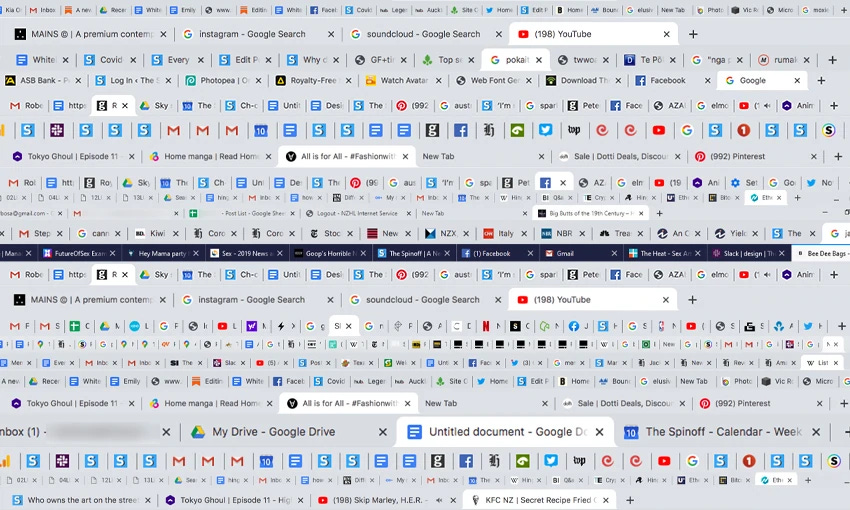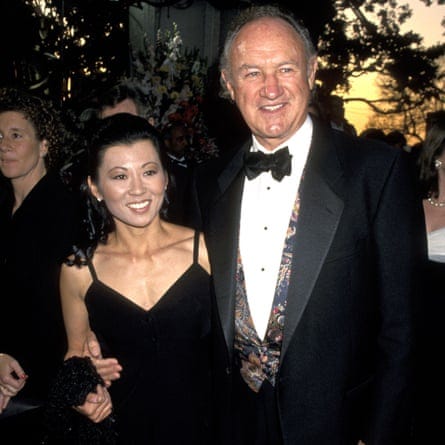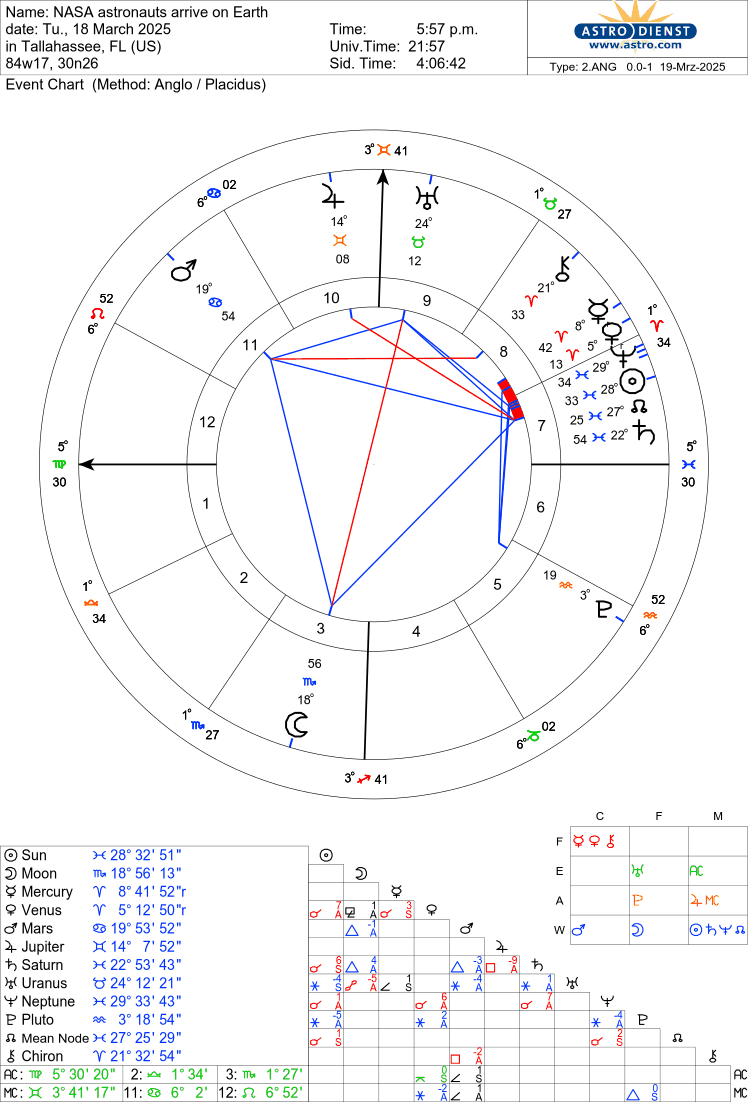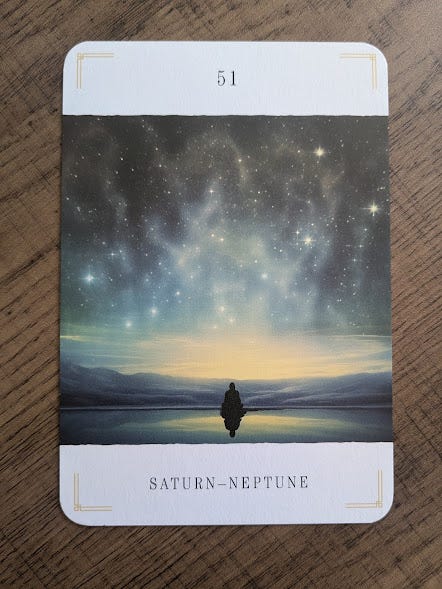Letting the Aspects tell the Story
On Gene Hackman's Death, the Astronauts' Homecoming and the Cosmic Solitude of Saturn-Neptune
Whether glancing at the sports coverage, eyeing the celebrity gossip column, or skim-reading the obits—reading the news often feels like a meaningless and disjointed experience.
Things seem to happen, often without any rhyme or reason, and the show goes on regardless.
Who are these people?
What do these events mean?
Are they symbolic expressions of a subtle but pervasive cosmic order that transcends surface level appearances?
These questions tend not to get asked too much.
This is because we live in a disenchanted cultural milieu that regards such questions as nonsense.
And it’s why I prefer to read the news with multiple tabs open, in which I can cast the astrological charts of all the personalities and events I read about, to get a handle on their cosmic significance, and in doing so experience a brief glimpse of the numinous archetypal powers that lie concealed behind seemingly random events.
This way of reading the news is simply better. Truer. More nourishing to the soul.
Let me demonstrate this via two recent examples:
The Death of the Actor
The sad and mysterious circumstances surrounding the deaths of Gene Hackman and Betsy Arakawa—who had been dead for some time before their bodies were discovered—reflect the ongoing Aries-Pisces stellium of Sun, Mercury, Venus, Saturn and Neptune.
This planetary convergence speaks to several interrelated themes and motifs:
The death (Saturn) of the archetypal actor/performer (Sun) alongside his lover (Venus).
The hidden, tragic dimension (Saturn) of Hollywood stardom (Sun-Neptune).
Love that endures through time; lovers that are united in death (Venus-Saturn) — the couple were together for over thirty years.
Morbid speculation and theorizing about the events that led to their deaths (Mercury-Saturn-Neptune).
The confusion and cognitive disintegration that is entailed by advanced Alzheimer’s disease (Sun-Mercury-Saturn-Neptune) — it’s thought that Hackman, in his final days, was unable to comprehend his wife’s death.
Profound loneliness and cosmic estrangement (Saturn-Neptune).
An apparent phone call (Mercury) from Betsy Arakawa (Venus) to her doctor as a confounding element (Neptune) in the narrative of their deaths (Saturn).
I expect this story to continue to garner attention as Mercury and Venus continue in their retrograde motion amid the Saturn-Neptune conjunction.
The Astronauts’ Homecoming
In more uplifting news, the astronauts Sunita Williams and Barry Wilmore were successfully returned to Earth on March 18, having been stranded aboard the International Space Station for nine months.
The SpaceX rescue mission splashed down off the coast of Florida as the Moon opposed Uranus, which was close to its zenith in the evening sky.
As with the previous item, this story offers a compelling glimpse into the current astrological weather, with each aspect of the splashdown chart pointing towards the archetypal significance of this event, as well as revealing different facets of the ever evolving collective zeitgeist in which we live:
Saturn conjunct Neptune: a long period of cosmic loneliness and spiritual abandonment; a dark night of the soul.
Uranus sextile Saturn-Neptune: the sudden liberation (Uranus) from this state of cosmic alienation/exile (Saturn-Neptune).
Moon opposite Uranus: the homecoming (Moon) of the archetypal astronaut (Uranus); feelings of freedom and deep emotional relief.
The Sun-Venus-Saturn-Neptune stellium: the archetypal hero (Sun), or heroine (Sun-Venus), stranded or imprisoned (Saturn) in a strange and otherworldly locale (Neptune) by a feminine divinity (Venus-Neptune); the Boeing starliner that transported Sunita and Barry to the ISS was named Calypso — in Greek mythology, Calypso is a nymph who falls in love with the hero Odysseus and imprisons him on the island of Ogygia for seven years, while Odysseus pines for his wife and family back home — talk about tempting fate!
In addition to the above: it’s within the realm of possibility that Sunita and Barry developed a considerable bond while they were trapped in space together, looking out at the stars. This stellium suggests something akin to a Platonic ideal of friendship (Sun-Venus-Neptune) that emerged from the crucible of their ordeal (Saturn).
Uranus trine Pluto: profound technological empowerment; living in the new space age.
Saturn sextile Uranus: impressive feats of mechanical engineering, rocket science and technical know-how; a genius for problem solving. Conversely, the obstacles, setbacks and delays (Saturn) that postpone an eventual liberation (Uranus).
Sun sextile Uranus: the heroic dimension (Sun) of space travel and aviation (Uranus); Buzz Lightyear swoops in to save the day!
Uranus sextile Neptune: the archetypal astronaut (Uranus) splashes down in the boundless ocean (Neptune); Prometheus merges with the divine.
We might consider this event as a powerful symbol of the emerging archetypal zeitgeist that will prevail over the next few years, in which the Saturn-Neptune conjunction will remain in sextile aspects to both Uranus and Pluto, as the planets migrate into new signs. This alignment will carry us into the early months of 2027.
During this time, we are likely to sense a growing mood of disillusionment, skepticism, hopelessness and alienation (Saturn conjunct Neptune) within the collective psyche, that is inextricably intertwined with our radically disruptive techno-political zeitgeist (Uranus trine Pluto). In fact, this is already in evidence. The demoralizing and alienating effects of living in a tech oligarchy at the tail end of the neoliberal experiment are already being felt by countless millions. In the coming months and years, I expect we will continue to hear a lot about the loneliness epidemic, as well as the isolating and addictive tendencies of social media and digital technology.
Despite this, the possibility of an unexpected—and potentially liberating—twist in the tale remains. With Uranus forming sustained, harmonious aspects to Saturn, Neptune and Pluto, the next three years do not represent a foregone conclusion, or the inevitability of a lonely techno-authoritarian dystopia, as much as that seems likely.
The tech broligarchs, with their “move fast and break things” approach, don’t have a monopoly on the trickster energy of Uranus—as much as they’d like you to think otherwise—we can, and will, find ways to resist; to reclaim the mantle of disruption and ingenuity from these Silicon Valley swindlers; to disrupt the disruptors, so to speak. If in doubt, just look at the collapse of Tesla sales in Europe, the exodus from X or the rising popularity of ‘dumbphones.’ There are levers that we can pull, although we might not know what they are yet.
Beyond the political sphere, the next few years may present opportunities to break out of the meaning crisis that has plagued much of the world in recent decades. Historically, the Saturn-Neptune cycle is related to periodic crises of faith; think here of Nietzsche’s famous proclamation “God is dead”, (The Gay Science, 1882) during a Saturn-Neptune conjunction, or of the skepticism that prevailed during the rise of the New Atheist movement, epitomized by the publication of Richard Dawkins’ The God Delusion in 2006, during the most recent opposition of these planets.
We are clearly at an inflection point with regards to the scientific and cultural narrative around the topic of consciousness. The mainstream view of scientific materialism, that sees consciousness as a mere byproduct of material processes, is increasingly being called into question by scientists and philosophers alike. There is now an increased willingness to consider other viewpoints, such as panpsychism or analytic idealism, that view consciousness as being fundamental to reality in some way.
I predict that this ongoing debate about the nature of consciousness will become increasingly prominent during the next few years, and that many people will abandon their belief in materialism as a result. The materialist worldview underpins the pervasive sense of meaninglessness, alienation and disenchantment that characterizes modern life. Breaking free from this outdated worldview is likely to be a significant theme of the Uranus-Neptune sextile, given the association of that planetary cycle with sudden shifts in consciousness and perception, metaphysical reorientation and awakening to transcendent spiritual realities.1
In other news, my good friend
has created an oracle deck of 55 cards, with an accompanying guidebook, that beautifully evokes the planetary archetypes and their various combinations.The book provides succinct and compelling overviews of each planetary pair, with suggestions as to how to skillfully navigate the archetypal energies and transits related to each. The book makes for an excellent, and rather concise, introduction to the overarching perspective of archetypal astrology (as formulated by Richard Tarnas) and I would recommend it to anyone seeking to deepen their understanding in this regard.
The Saturn-Neptune card (pictured above) evokes the sense of cosmic solitude that I spoke of in relation to the stranded astronauts. These visualizations, with their accompanying descriptions, are useful for intuitive and introspective purposes, as well as being tactile and aesthetically pleasing.
I will leave you with an excerpt from the Saturn-Neptune section of the book that speaks to the themes mentioned throughout this post:
Though recurring experiences of this pair certainly are challenging, understanding them from this archetypal perspective does help to illuminate one path through them; remember that your personal experiences of lost connection and abandonment are specific expressions of a universal spiritual process. Personal loneliness points at something greater; the soul’s deep desire to remember its true nature.
The 55 card deck and guidebook are available to purchase here.
Richard Tarnas explores these correlations with great depth and subtlety, in his astrological masterwork Cosmos and Psyche (2006).









Absolutely love this!
Thanks, Sheera. I appreciate you saying so :)